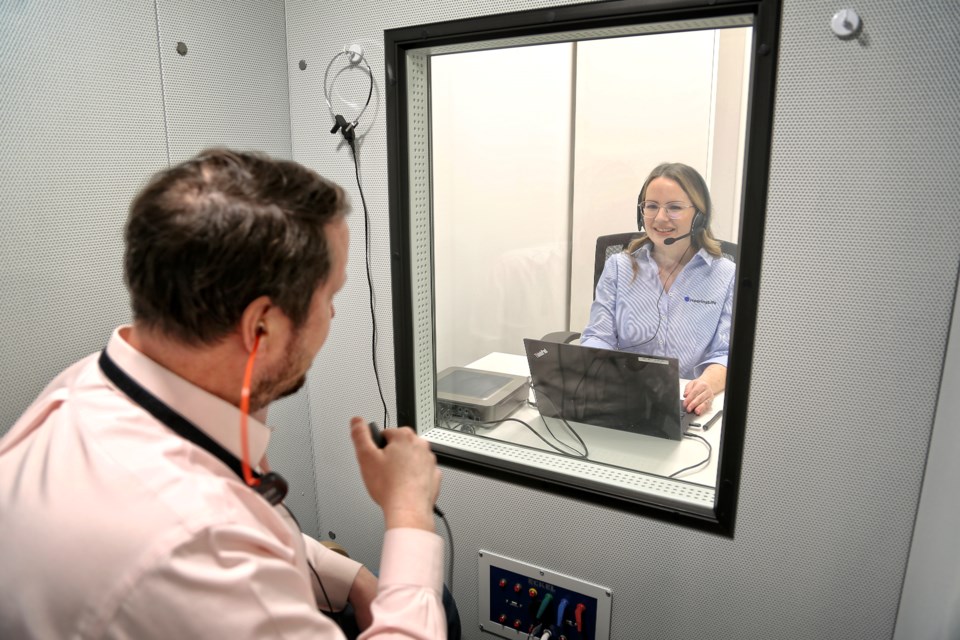Have you seen the latest hearing aids? You may not have, because they are nearly imperceptible.
Hearing care professionals understand that many people are hesitant to have their hearing tested, for fear that if their hearing does require some assistance, they will be made to wear big, obvious-looking hearing devices. This needn’t be a worry, however, because with the new options available, they may not even be noticed by others—and you, as a wearer, may even forget you’re wearing them.
The technology has come such a long way. In fact, the people around you are not very likely to detect that you’re wearing a hearing device at all.
“With advances in technology and design, today’s hearing aids are smaller and more discreet than ever. Hearing aids are becoming more and more powerful even in the smaller styles that were limited to those with milder hearing loss in the past,” says Katie Koebel, Senior Manager, Audiology at HearingLife Canada. “Whether the hearing aid is in your ear or sits behind it, your hearing care professional will help you find a solution that both meets your unique hearing needs and is discreet. Having an untreated hearing loss is often more noticeable to others than a hearing aid!”
The best thing to do is to visit a HearingLife location and see the latest devices for yourself; there is zero pressure to buy and staff are confident you’ll be amazed. You will be able to see the new hearing aids in person and how sleek the most recent models are.
Hearing aid technology
It can help to get yourself acquainted with the different types of hearing aid solutions that are currently available first. These range from in-the-ear and behind-the-ear to rechargeable, invisible and Bluetooth options.
There are a wide variety of hearing aid styles, says Koebel, and determining the best one for you will depend on your unique hearing loss, the size and shape of your ear, the features you require and your own personal preferences. Your hearing care professional will be able to help you choose the option that is best for you.
“Our most popular style of hearing aid is called a mini-receiver-in-the-ear hearing aid and is among the most discreet. With this style, most of the hearing aid components sit behind your ear and are shielded by your outer ear,” Koebel explains. “There is a clear wire that runs down to the ear canal opening so the sound is delivered to your ear. This style is not only comfortable but also discreet.”
“Another option you may consider is a custom hearing aid, where all of the hearing aid components sit inside your ear canal, offering a nearly invisible option,” she says.

Free hearing tests
Fight the urge to be in denial about hearing loss: A simple hearing test is the first step to finding the right solution. At HearingLife, tests are completely free of charge. They also couldn’t be simpler to arrange, as you can book your free hearing test online, from the comfort of home.
When you do go in to have your hearing tested, please feel free to bring a loved one with you; having someone at your side can help both of you. You are each likely to find the session very informative.
“During your hearing test, a lot of information is shared by both the individual being tested and the hearing care professional. A loved one can offer a different perspective on how you are hearing in your everyday life and can act as a second person to absorb all of the information the hearing care professional shares,” says Koebel. “In addition, there are tests your hearing care professional will conduct that require a familiar voice.”

Quality of life
While it’s not something we think about often, hearing loss impacts not just the quality of your life but the life of your loved ones too. It is a challenge dealing with someone with hearing loss and everyone needs strategies to cope.
Hearing loss disrupts interpersonal communication, affecting everyone who is part of the communication, says Koebel. “Loved ones may notice that the television or radio is played at a louder volume than they’re comfortable with, they may have to repeat themselves or have their speech mis-heard resulting in communication breakdown that is frustrating for both the individual experiencing the hearing loss and their loved one,” she says. “The good news is that there is help! Hearing aids can help you hear better and reduce these frustrations.”

Consultations with a hearing professional are free. You can even take advantage of a free hearing aid trial at home, risk-free, for 30 days. Referral from a doctor isn’t required.
Visit HearingLife Canada for a free hearing test or to book an appointment. You can also call them at 1-888-514-9515. There are over 350 clinics across the country, for your convenience. Keep up with the latest innovations in hearing technology by following them on Twitter, Facebook and Instagram.
